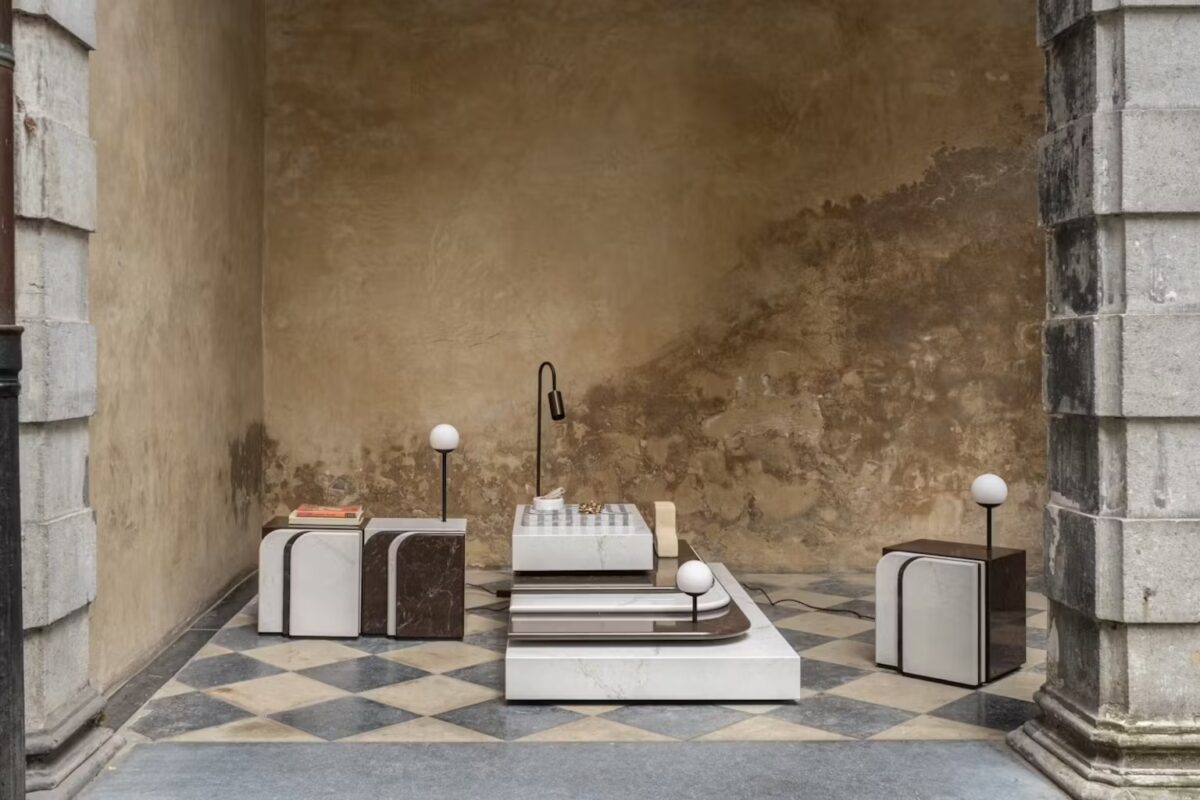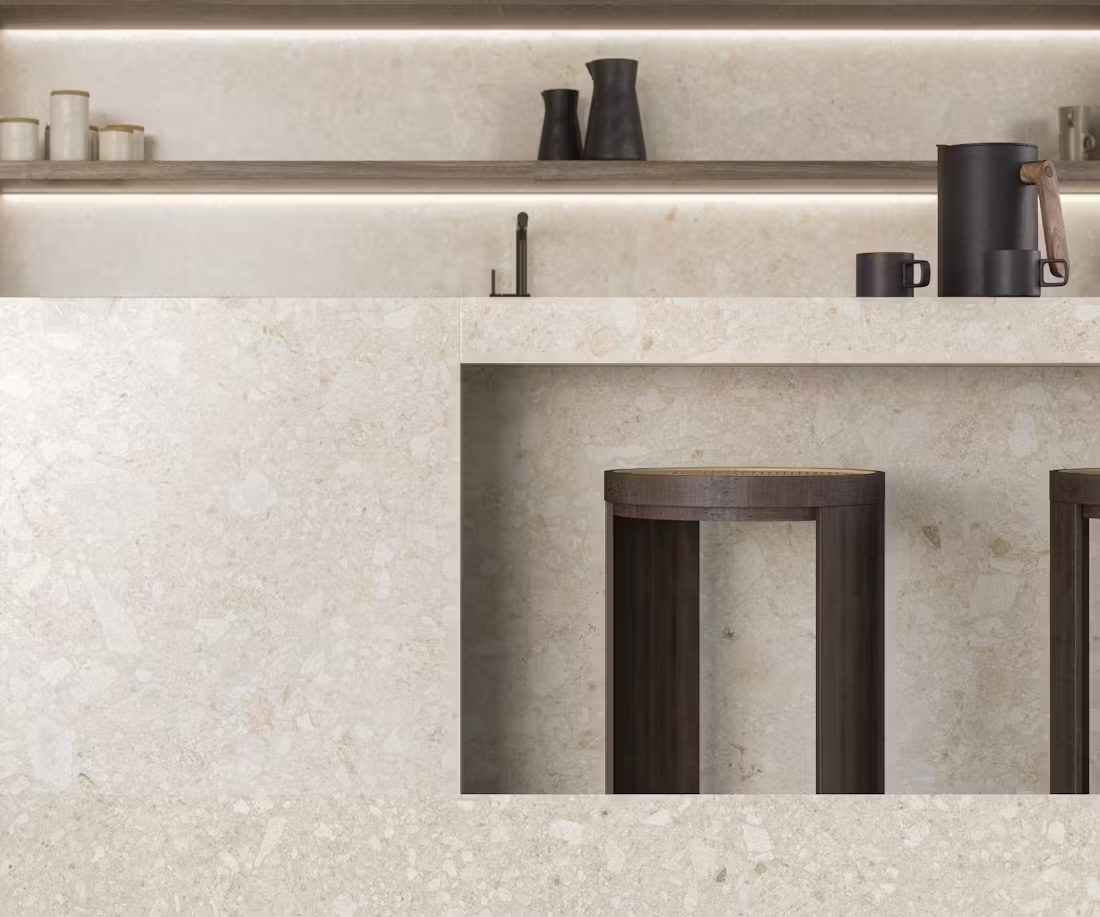When your kitchen, dining and living areas flow together, your home feels larger and more coherent. If you’re planning or modernising your kitchen, understanding how to link these zones helps you achieve both function and style. The kitchen is no longer an isolated workspace – it’s part of a shared living landscape.
Why Open, Connected Spaces Matter
Modern homes increasingly favour open layouts where cooking, dining and relaxing happen in a single environment. Peer-reviewed research on more than 3,600 kitchens shows that adaptable layouts support longer use cycles and better circular-design potential.
A separate 2023 review of kitchen and dining spaces found that spatial design directly affects how people cook and eat. For homeowners, this means that the way you plan your space shapes not only convenience but also everyday routines. Open sightlines invite more light and encourage social interaction, but they also demand a coordinated approach to materials, lighting and storage.

Modular furniture in coordinated mineral surfaces helps the kitchen, dining, and living areas feel like one coherent space. Source: Consentino
Planning the Space: Layout, Zones and Flow
Start by analysing your floor plan. Whether you’re opening a wall or designing a new build, think in zones. An island or peninsula can bridge kitchen and living areas while keeping definition intact. Draw how you and others move through the room – from fridge to prep area to dining to lounge. A logical flow reduces clutter and visual noise.
Repeating finishes across the zones helps unify them. Design guides consistently note that continuing one surface or colour family across kitchen and living furniture maintains harmony. If your countertop faces the living room, extend the same or a related finish onto the island sides or shelving.
Manufacturers such as Cosentino offer surfaces that support this approach. Their hybrid mineral material Silestone and ultracompact surface Dekton are engineered for diverse applications – from countertops to cladding and even furniture – making them useful when one design language runs through the space.

A streamlined island defines movement between cooking, prep, and dining zones while keeping the entire room open and connected. Source: Consentino
Materials & Surfaces That Connect Kitchen and Living
In a shared space, durability and look both matter. Hybrid mineral surfaces like Silestone combine mineral and recycled components and are made with Cosentino’s HybriQ technology. They provide a refined appearance with everyday resilience. Dekton, an ultracompact surface made by sintering minerals under heat and pressure, is suitable for indoor and outdoor use, including vertical panels or furniture elements.
Opting for one durable surface across rooms helps maintain continuity. For visual calm, limit texture changes and stick to a consistent palette. Design studies note that continuity in finishes helps large open rooms feel balanced rather than fragmented. Surfaces seen from both kitchen and living sides should share tone or texture to avoid abrupt contrasts.

Modular furniture in coordinated mineral surfaces helps the kitchen, dining, and living areas feel like one coherent space. Source: Consentino
Colour, Texture and Atmosphere
A coherent palette supports the flow between zones. Choose a neutral base – soft grey, beige, or off-white – and a single accent colour for warmth. Use this accent sparingly in furniture or textiles so the space stays cohesive.
Smooth mineral surfaces can act as a neutral foundation, balanced by natural wood or matte metal for contrast. Consistent ceiling finishes and lighting across both zones visually extend the space and reinforce unity. Dimmable lighting allows a seamless shift from cooking brightness to evening ambience without breaking the mood.
For more inspiration, see the Kitchenfinder Guide on lighting design for open kitchens:
How-to: Your Step-by-Step Implementation
- Measure and sketch your layout, marking openings and movement paths.
- Define three main zones – cooking, dining, relaxing – and decide how they meet.
- Select one principal surface material that can appear in more than one zone.
- Choose a colour scheme that complements this surface in both light and dark conditions.
- Plan built-in appliances to minimise visual clutter from the living side.
- Continue flooring or ceiling details across both areas for cohesion.
- Review lighting to ensure consistent brightness and flexibility.
- Walk through the planned space as if you were preparing a meal and entertaining to check the flow.
Conclusion
A seamless kitchen-living space offers clarity, comfort and connection. By coordinating layout, colour and materials, you can create a room that feels open yet organised – functional for daily life and inviting for guests. Durable hybrid and ultracompact surfaces extend your design possibilities without compromising on care or longevity.
At Kitchenfinder, you’ll find more planning insights, material comparisons and design ideas to help you shape a modern living kitchen that truly fits how you live.
